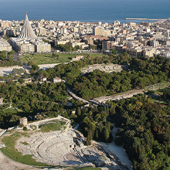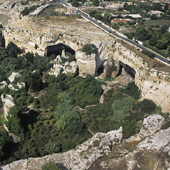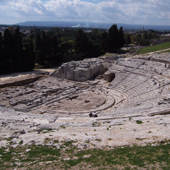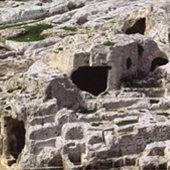
 |
Neapolis Archaeological Area | |
| Aerial view of the archaeological park |
At this extraordinary complex of monuments is the backdrop of the spectacular arc of the latomie del Paradiso and of S. Venera: ancient stone quarries that still bear the marks of extraction and in which they open, in a luxuriant vegetation of orange and secular trees, evocative and very large caves, including the Grotta dei Cordari and the Orecchio di Dionisio.
 |
 |
 |
||
| Latomia (stone-quarry) of Paradise |
Greek Theatre of Syracuse |
Necropoli Grotticelli: area of the
so-called Tomb of Archimedes |
